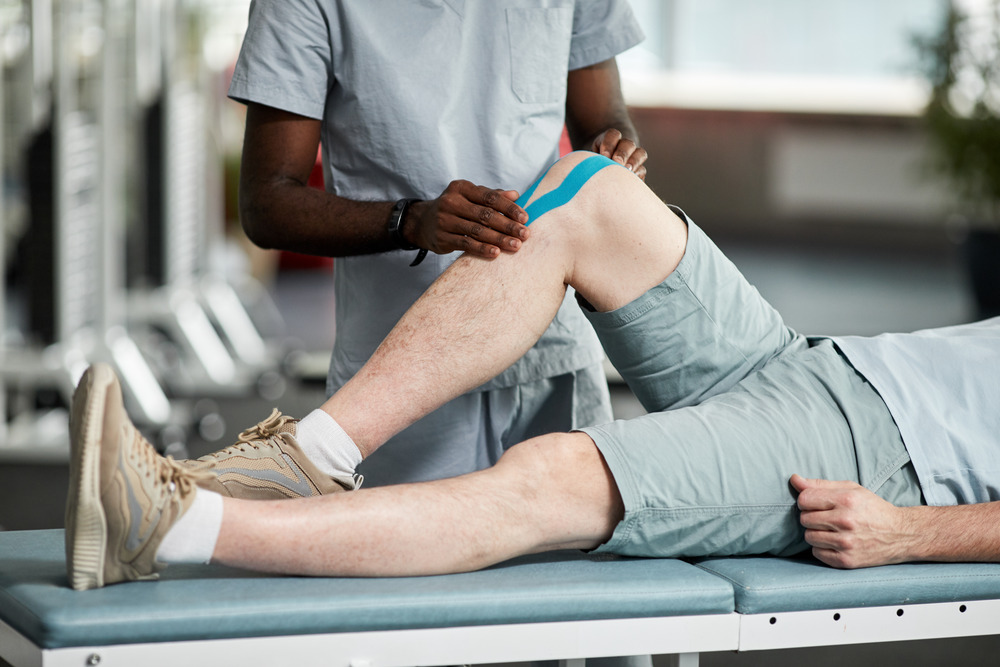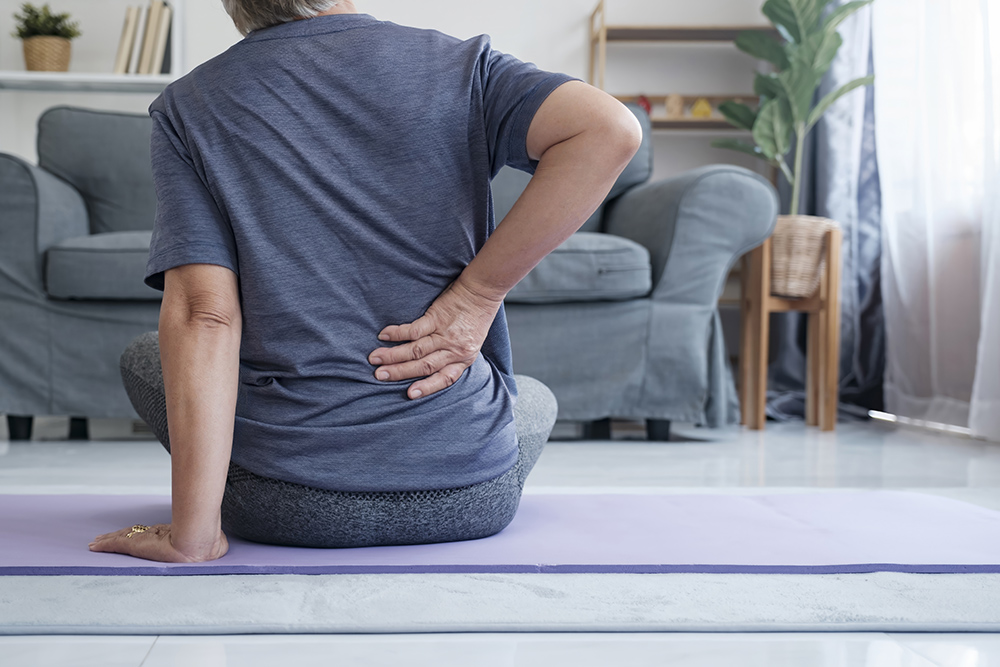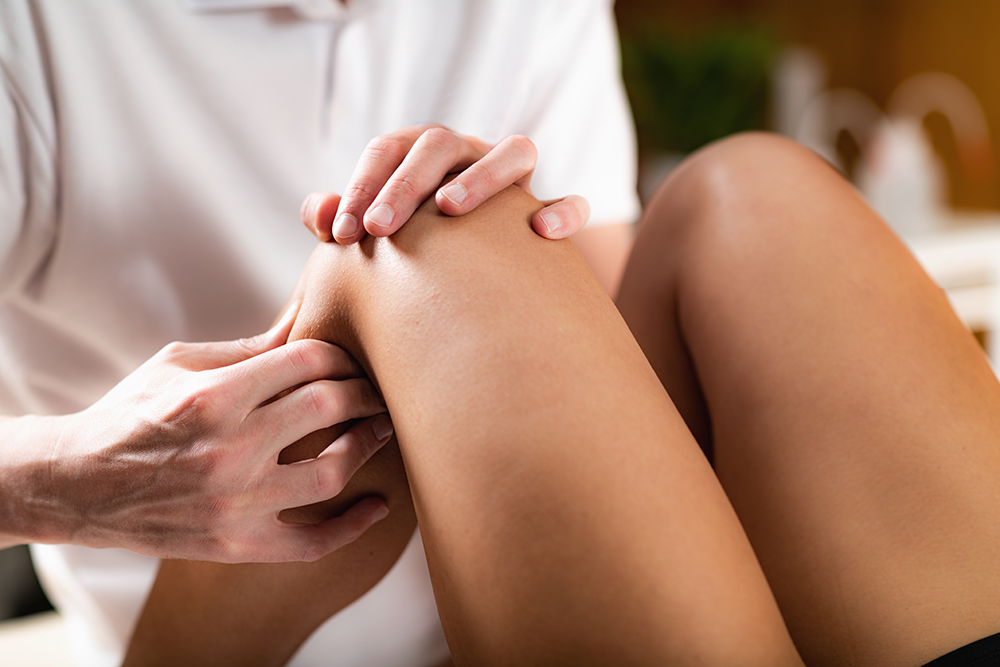Contents
Your knees are one of the most important and complex joints in your body. They’re crucial for almost every movement you do, from walking and standing to jumping and climbing or descending stairs. Your knee joints consist of ligaments, tendons, cartilage, muscles and bones that work together to provide stability and allow you to move smoothly. Due to their essential role in mobility, they’re also vulnerable to injury and wear, making them a common source of discomfort, especially if you have arthritis.
There are many types of arthritis, but osteoarthritis and rheumatoid arthritis are two of the most common forms that affect the knees. Understanding the symptoms of each and knowing the available treatment options can be life changing for those dealing with knee pain from arthritis.
Symptoms of knee osteoarthritis and the effects on your life
Osteoarthritis (OA) is the most common type of arthritis, especially in older adults. OA affects 10% of people over 55, and approximately 365 million people globally have knee osteoarthritis. OA develops when the protective cartilage at the ends of the bones wears down over time, causing pain, swelling and stiffness in the knees. Because the knees support a lot of your body weight, they can be particularly susceptible to the degenerative effects of OA.
Symptoms of knee osteoarthritis include:
- Pain during movement
- Stiffness
- Swelling
- Crackling or popping sound
- Limited range of motion
Knee osteoarthritis can significantly impact your daily life. It can become harder to do activities you enjoy, such as walking, jogging or playing sports. Even simple movements like standing up or sitting down can be painful. As the condition progresses, the pain may interfere with your sleep, causing you to be fatigued and experience a reduced quality of life.
Symptoms of knee rheumatoid arthritis and the effects on your life
Rheumatoid arthritis (RA) is an autoimmune disease that causes the body’s immune system to mistakenly attack the joints, including the knees. Unlike OA, which is primarily caused by wear and tear, RA can affect people of any age and can affect both knees at once. RA affects approximately 18 million people globally.
The symptoms of knee rheumatoid arthritis include:
- Warmth and redness
- Swelling
- Pain
- Fatigue
- Joint deformity
The impact of rheumatoid arthritis on your life can be profound. It can make walking, standing or any weight-bearing activity painful. Due to pain and fatigue, daily tasks like cooking, cleaning and even personal care can become overwhelming. RA can affect multiple joints, making the overall burden on your body even greater.
7 treatments that may help ease knee pain due to arthritis
While there currently isn’t a cure for arthritis, there are a variety of treatments available that can help you manage pain and improve function. A combination of approaches may be needed to provide you with the best relief to help you stay active and maintain a good quality of life. Here are seven treatments for arthritis-related knee pain:
- Medications — Nonsteroidal anti-inflammatory drugs (NSAIDs) like ibuprofen or naproxen can help reduce pain and inflammation in your knee. If you’re unable to take NSAIDs, acetaminophen can help with pain relief, but it doesn’t reduce inflammation.
- If you have RA, disease-modifying antirheumatic drugs (DMARDs) can help slow down the progression of the disease and reduce joint damage. Biologics are a type of mediation that targets specific parts of your immune system to help prevent inflammation.
- Physical therapy — Physical therapy can be highly effective in helping to manage and alleviate knee pain caused by arthritis. Your physical therapist can create a personalized treatment plan that may include therapeutic exercises and techniques intended to improve flexibility, strength and range of motion.
- Aerobic exercises — Low-impact aerobic exercises, such as swimming, cycling or walking, can help strengthen the muscles around your knee, improve overall fitness and help manage weight without adding too much strain on the joint.
- Weight management — Maintaining a healthy weight can significantly reduce stress on the knees. Losing even a small amount of weight can help reduce knee pain and improve mobility. One pound of weight can add up to 4 pounds of pressure on your knees.
- Assistive devices — Using an assistive device, such as a cane, crutch, or knee brace, can help take pressure off your knee joint and make it easier to walk.
- Corticosteroid injections — In some cases, your doctor may recommend corticosteroid injections. These injections can provide targeted, temporary relief by reducing inflammation in your knee. However, they are typically used sparingly due to potential side effects.
- Surgery — For severe arthritis that doesn’t respond to conservative treatments, surgery may be necessary. Surgical approaches to help knee pain due to arthritis include:
- Arthroscopy — Arthroscopy is a minimally invasive procedure on the knee joint to clean out damaged cartilage or repair minor tissue injuries. This option can be considered for early stages of arthritis or to help address mechanical issues causing pain.
- Partial knee replacement — If only one part of the knee is damaged, a partial knee replacement may be recommended. This procedure involves replacing only the affected section of the joint, preserving more of the natural bone and tissue while still providing pain relief and improving function.
- Total knee replacement — In a total knee replacement, the entire knee joint is replaced with an artificial implant made of metal, plastic or ceramic. This procedure can be recommended in cases of advanced osteoarthritis, where most of the cartilage has worn away and the pain is significantly affecting daily activities.
Physical therapy techniques for knee pain from arthritis
Physical therapy can be a vital component to help you manage knee pain from arthritis. Your physical therapist will use a variety of effective techniques to help reduce pain, improve mobility and strengthen the muscles around your knee. Techniques your physical therapist may use in your treatment plan include:
- Therapeutic ultrasound — During therapeutic ultrasound, your physical therapist will use a handheld device that emits high-frequency sound waves to penetrate deep into the soft tissue of your knee. These waves generate gentle heat that helps increase blood flow, reduce inflammation and relax tight muscles, promoting healing in the affected area.
- Electrical stimulation — Your physical therapist will place electrodes on your skin around the affected knee. These electrodes send low-level electrical pulses into the muscle, which can help reduce pain, stimulate blood flow and promote healing. It can also stimulate weak muscles, encouraging improved function and reducing discomfort when you move.
- Manual therapy — Manual therapy encompasses a variety of hands-on techniques, for example:
- Soft tissue manipulation — Your physical therapist will use their hands to apply targeted pressure and kneading motions to the muscles and connective tissue surrounding your knee. This technique helps release muscle tension, reduce swelling and improve flexibility.
- Joint mobilization — Your physical therapist will gently move your knee through a series of controlled motions to help improve your range of motion and reduce stiffness. These movements can stretch the surrounding tissue, improving flexibility and reducing discomfort. Joint mobilization can also help realign your knee joint, which can be affected by arthritis.
- Aquatic therapy — Your physical therapist may guide you through exercises in a heated pool, where the buoyancy of the water supports your body weight and reduces stress on your joints. The resistance of the water also helps you build strength without placing excess strain on your knees, allowing you to move more comfortably and freely.
- Therapeutic exercises — Your physical therapist may design a personalized exercise program intended to strengthen and stretch the muscles around your knee. Strengthening exercises targeting your quadriceps, hamstrings and calf muscles can help provide better support for your knee joint. Stretching exercises can improve flexibility, helping to ease tension and improve your range of motion.
Knee pain from arthritis can have a significant impact on your daily life, but with the right treatments, it’s possible for you to manage pain and improve function.
Lattimore PT can help you overcome knee pain from arthritis with expert care
At Lattimore Physical Therapy, we understand how challenging it can be to live with knee pain from arthritis. Our team of experts, including over 30 physical therapists with their Certification in Orthopedic Manual Physical Therapy, is dedicated to providing effective, personalized care to help you manage your pain and improve your mobility. We can create a treatment plan tailored to your unique needs to help you regain strength, reduce pain and get back to doing the things you love.
Contact our team today for more information or to schedule an initial appointment.



